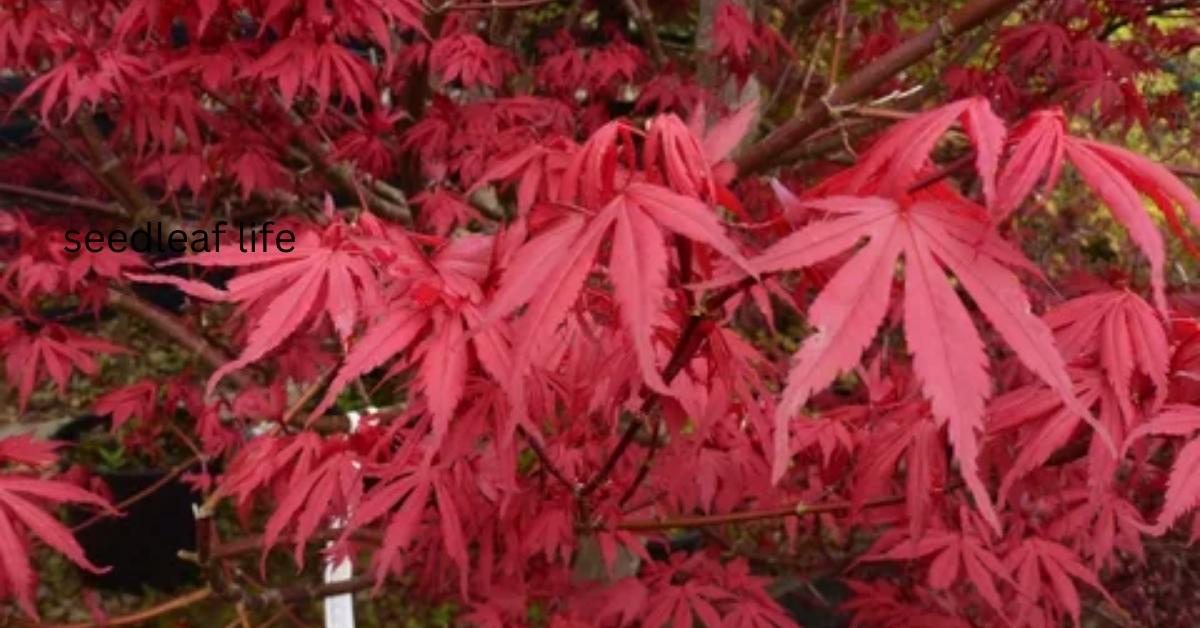Did you know that a Japanese Acer in pot can transform any space into a peaceful haven? As gardening and home decor trends shift towards incorporating more natural elements, these stunning trees have surged in popularity for their vibrant colors and graceful forms. In this article, we’ll explore the enchanting world of Japanese Acer in pots, revealing why they’ve become a must-have for both seasoned gardeners and home decor enthusiasts alike. Get ready to discover how these elegant plants can elevate your living environment and provide a serene escape right in your own home.
I have planted a Japanese Acer in my home. It’s such a beautiful plant. I’ve placed it in a pot, and honestly, it’s the charm of my house. If you enjoy caring for plants in pots, you might also like our guide on planting lavender seeds in pots for a fragrant addition to your garden.
What is Japanese Acer in Pot?
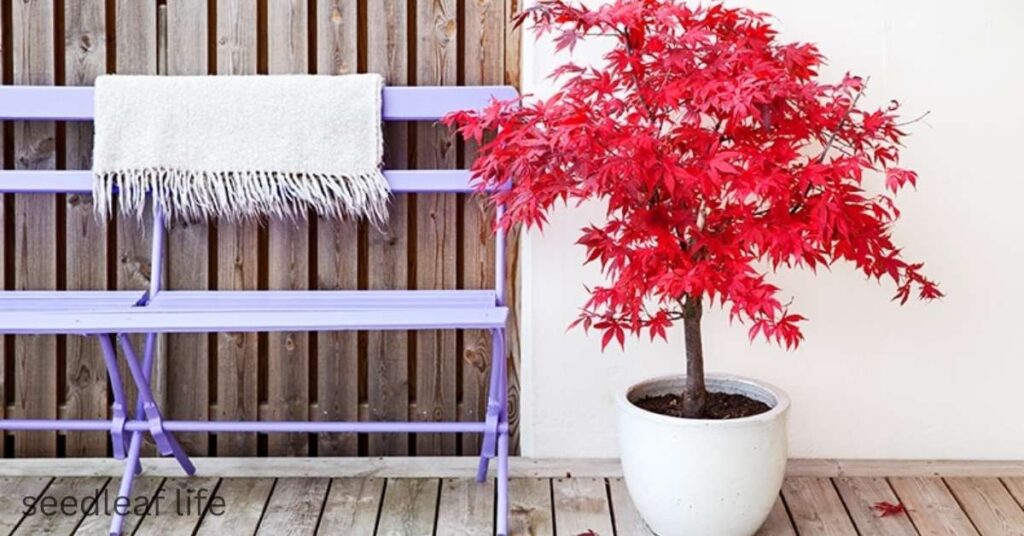
Brief explanation of Japanese Maple (Acer palmatum)
- Japanese Maple, or Acer palmatum, is a stunning deciduous tree celebrated for its delicate foliage and vibrant autumn colors.
- With intricate, hand-shaped leaves that range from deep green to fiery red, this tree brings a touch of elegance to any garden space.
- Its compact size and graceful form make it an ideal candidate for container gardening, allowing even those with limited outdoor space to enjoy its beauty.
Why gardeners love growing it in pots
- Growing Japanese Acer in pots offers several advantages for gardeners.
- Firstly, it allows for better control over soil conditions, ensuring the tree receives the right nutrients and drainage.
- This adaptability also means you can easily relocate your Acer to showcase its stunning foliage in different areas of your garden or patio throughout the seasons.
- Additionally, pot cultivation protects the roots from extreme temperature fluctuations, giving your tree a stable environment in which to thrive.
- With proper care, including regular watering and strategic placement in partial shade, your Japanese Maple can flourish in a pot, becoming a striking focal point that draws admiration from all who see it.
Step 1: Choose the Right Pot
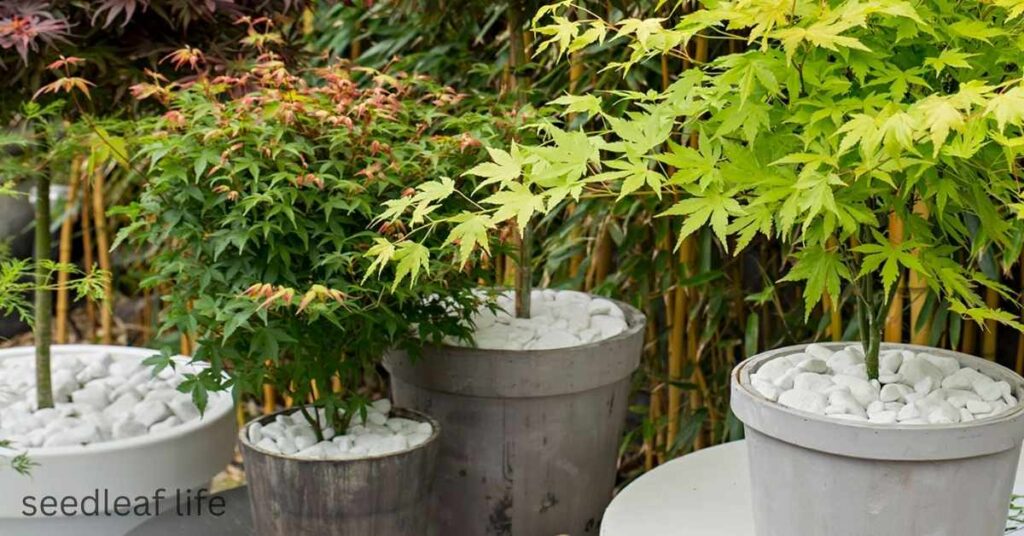
Ideal size & material for Japanese Acer in Pot
Pot Size
- Choose a container at least 12–18 inches in diameter.
- Adequate space allows roots to spread and grow healthily.
- Too-small pots stunt growth and stress the plant.
- Overly large pots may retain excess moisture, risking root rot.
Pot Material
- Lightweight options: fiberglass or plastic for easy movement.
- Traditional clay or ceramic pots add elegance to the garden.
- Porous materials regulate moisture and support root health.
- Aesthetic appeal + practicality make the right material important.
Drainage Requirements
- Ensure the pot has multiple drainage holes.
- Prevents water accumulation and root rot.
- Japanese Acer in pot prefers well-draining soil.
- Healthy drainage = stronger roots and better growth.
Benefits of the Right Pot
- Enhances overall beauty of Japanese Acer in pot.
- Supports long-term growth and longevity.
- Balances health, aesthetics, and practicality.
- Makes the tree a true centerpiece in garden or patio
Step 2: Select the Perfect Location

Light requirements (partial shade/full sun
Ideal Light Conditions
- Japanese Acer in pot thrives best in partial shade.
- Dappled sunlight protects delicate foliage from harsh rays.
- Morning sun + afternoon shade is the ideal combination.
- Helps maintain vibrant leaf colors while reducing stress.
Full Sun Adaptation
- Some Japanese Acer varieties tolerate brighter conditions.
- Even sun-loving types need protection during peak heat.
- Provide shelter in the hottest part of the day.
- Prevents leaf scorch and excessive drying.
Practical Placement Tips
- Place Acer near garden structures for natural shade.
- Use taller plants to create filtered light conditions.
- Monitor how sunlight shifts across your garden daily.
- Adjust placement to ensure balanced exposure.
Result of Proper Placement
- Correct light ensures brilliant foliage colors.
- Prevents heat stress and leaf damage.
- Encourages steady, healthy growth.
- Makes Japanese Acer in pot a lush, captivating focal point.
Step 3: Prepare the Best Soil Mix
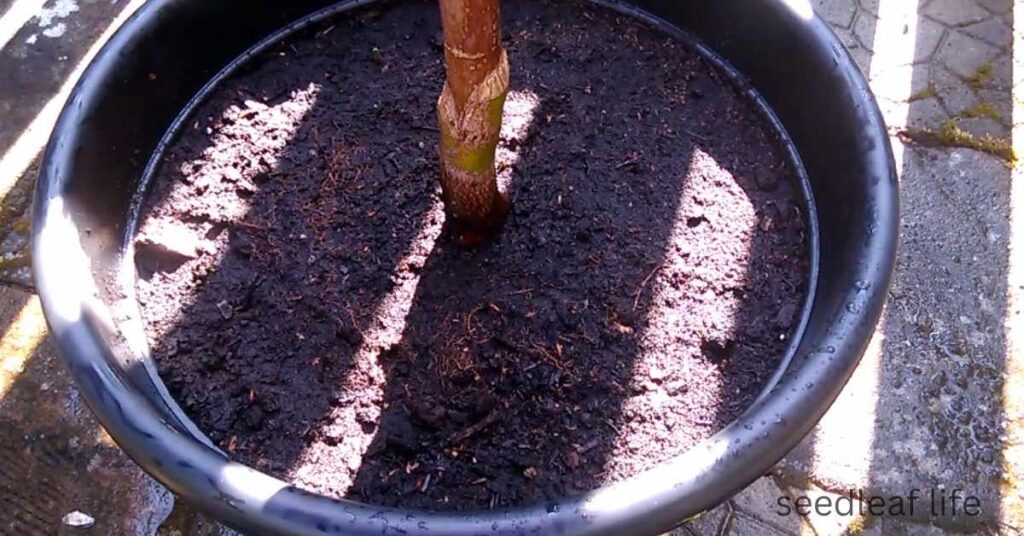
Soil type (well-drained, slightly acidic)
Choosing the Right Pot
- Select a container with ample drainage to avoid root rot.
- Pot should be at least 18 inches wide and deep for root spread.
- Ensure drainage holes at the bottom for healthy growth.
- Larger pots help mimic natural habitat conditions.
Soil and Planting Mix
- Use a high-quality potting mix rich in organic matter.
- Nutrient-dense soil supports strong root development.
- Well-draining mix prevents excess moisture.
- Replicates the natural conditions Japanese Acer thrives in.
Positioning the Pot
- Place Acer in dappled sunlight to protect delicate leaves.
- North or east-facing patio offers ideal light and shade balance.
- Avoid harsh direct afternoon sun to prevent scorching.
- Provide consistent exposure for healthy foliage color.
Care After Planting
- Rotate the pot occasionally for even sunlight on all sides.
- Balanced light prevents lopsided or weak growth.
- Monitor leaves for stress signs and adjust placement if needed.
- With proper planting and care, your Japanese Acer in pot becomes a serene garden focal point.
Step 4: Watering Schedule

How often and how much water it needs
Finding the Right Balance
- Watering is about balance — too much or too little can harm Japanese Acer in pot.
- Allow the soil to dry slightly between watering sessions.
- Check the top inch of soil; if dry, it’s time to water.
- Adjust frequency based on humidity and season.
Seasonal Watering
- Summer: water more frequently due to heat and evaporation.
- Winter: reduce watering, as growth slows down.
- Humidity also affects water needs.
- Observe changes in your environment to adjust routine.
How Much to Water
- Aim for deep watering so moisture reaches the roots.
- Avoid quick sprinkles that only wet the surface.
- Ensure excess water drains from the pot to prevent root rot.
- Strong roots grow deeper with proper watering.
Observation & Care
- Every Japanese Acer is unique, monitor its soil and leaves.
- Signs of stress indicate overwatering or underwatering.
- Develop an intuitive rhythm based on your tree’s needs.
- Consistent care leads to healthy, flourishing foliage.
Step 5: Fertilizer Needs
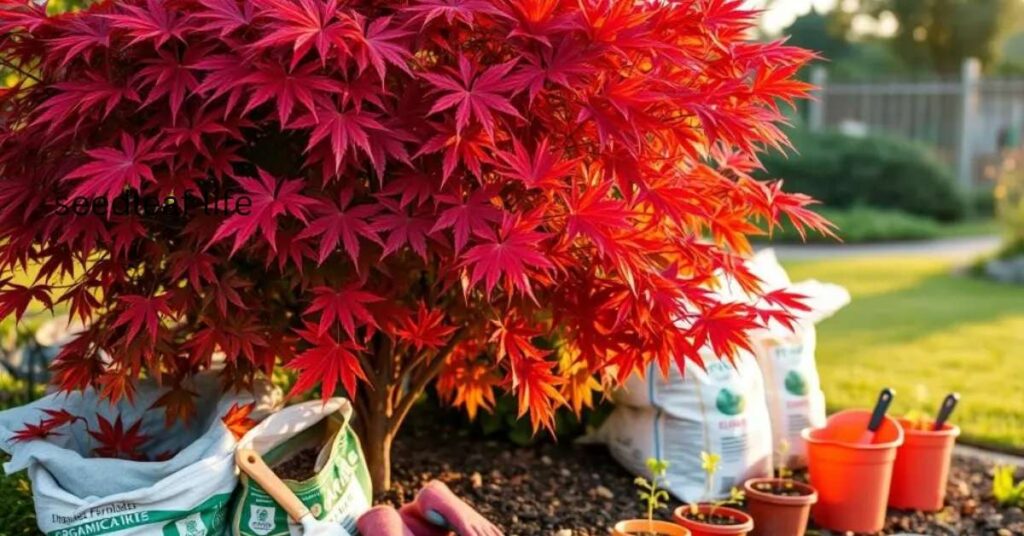
Best fertilizers for healthy growth
Understanding Fertilizer Needs
- Japanese Acer in pot needs balanced nutrients for vibrant foliage and growth.
- Right fertilizer makes a big difference in tree health.
- Slow-release options provide steady nutrition over time.
- Essential for strong roots and overall vitality.
Recommended Fertilizer
- Use a slow-release fertilizer with an NPK ratio of 10-10-10 or similar.
- Encourages root development and lush foliage.
- Balanced nutrients support container-grown trees.
- Prevents nutrient deficiencies common in pots.
Organic Alternatives
- Compost tea or fish emulsion enrich the soil naturally.
- Improve soil structure and drainage while feeding the plant.
- Safe, eco-friendly choices for healthy growth.
- Promote microbial activity in potting soil.
When to Fertilize
- Apply fertilizer during the growing season (spring to early summer).
- Aligns with Japanese Acer’s active growth phase.
- Avoid fertilizing in late fall or winter.
- Proper timing ensures maximum benefit and stunning colors.
Step 6: Pruning and Shaping
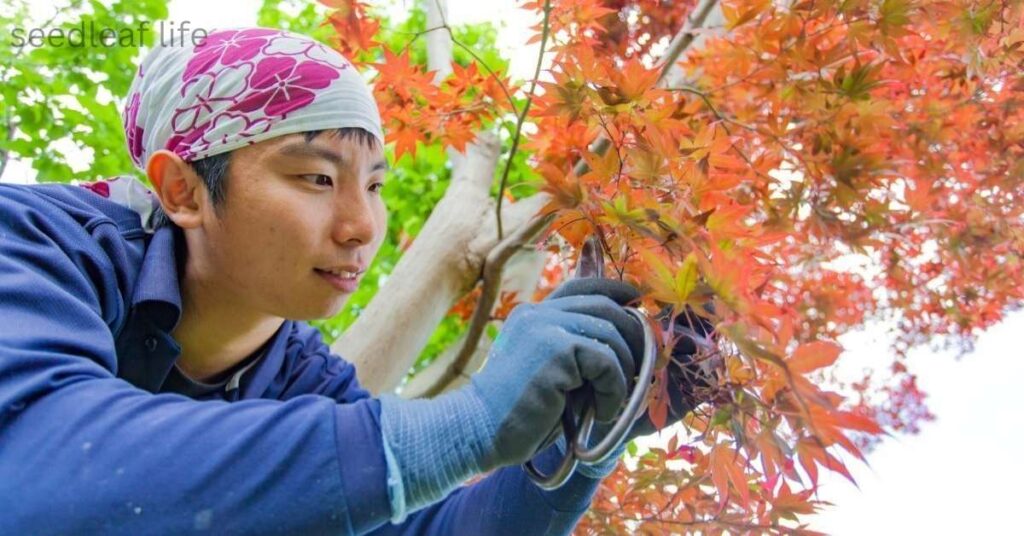
Tips to maintain bonsai look or natural shape
When to Prune
- Best time: late spring or early summer (active growing season).
- Regular trimming encourages denser foliage.
- Pruning maintains bonsai-like elegance.
- Focus on overall health as well as beauty.
How to Prune
- Remove weak, overlapping, or crossing branches.
- Keep the natural balance and form of the tree.
- Trim gently to avoid stress.
- Promote airflow and sunlight penetration.
Shaping Techniques
- Use wire to guide branches into desired positions.
- Create unique silhouettes to match your artistic vision.
- Check wires regularly to avoid bark damage.
- Adjust shaping as the tree grows.
Creative Tips
- Every Japanese Acer has its own unique character.
- Experiment with forms to find the perfect look.
- Patience is key — shaping takes time.
- Enjoy the process of creating your own masterpiece.
Step 7: Protection from Weather
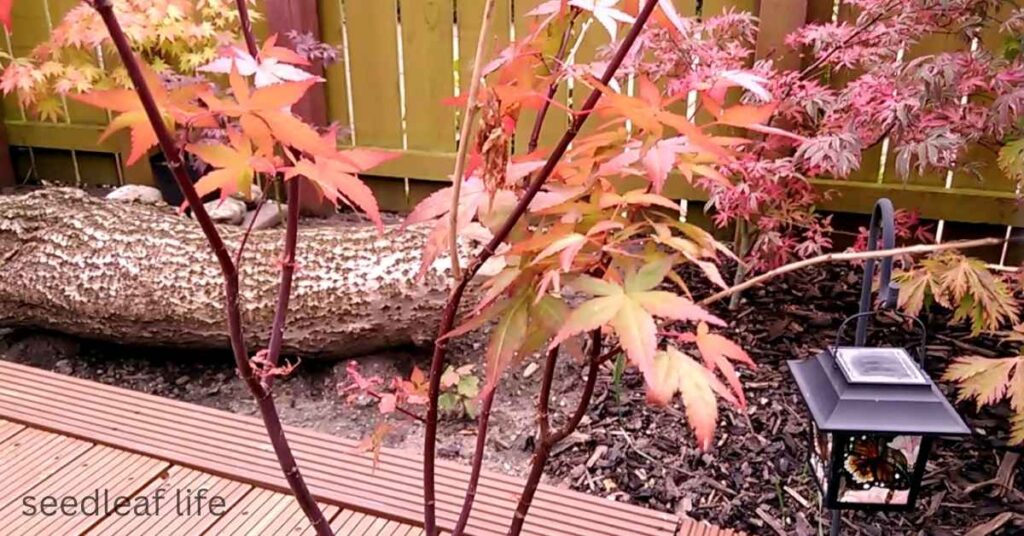
How to save Japanese Acer in Pot from frost, heat, and winds
Frost Protection
- Place the pot in a sheltered area like near a wall or under an awning.
- Wrap the pot with burlap or bubble wrap during colder months.
- Add a layer of mulch on top of the soil to retain warmth.
- During extreme cold snaps, bring the plant indoors overnight.
Heat Protection
- Keep soil hydrated; check if it’s dry an inch below the surface.
- Provide afternoon shade using a cloth or by moving to dappled light.
- Water deeply to prevent stress during hot days.
- Monitor leaves to avoid sun scorch.
Wind Protection
- Place decorative screens or taller plants nearby as windbreaks.
- Position the pot in naturally sheltered areas.
- Reduce exposure to strong winds by strategic placement.
- Protect branches from breakage during storms.
Step 8: Common Problems and Solutions
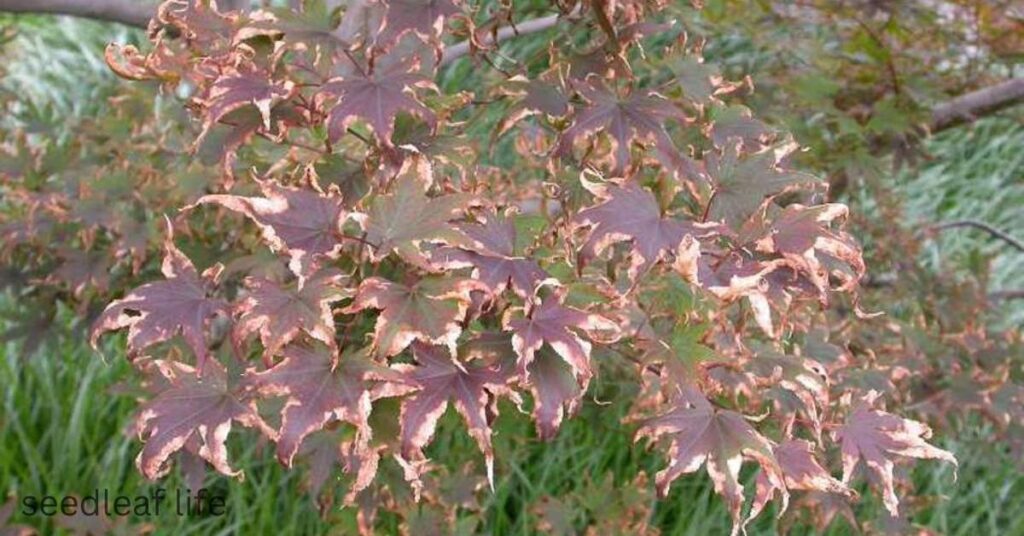
Leaf scorch, pests, root rot – and how to fix them
Leaf Scorch
- Browning edges on leaves caused by intense sunlight or inconsistent watering.
- Adjust location to dappled sunlight or partial shade.
- Maintain consistent moisture; mulch helps retain soil moisture.
- Protect roots from temperature extremes.
Pests
- Common pests: aphids, spider mites, and whiteflies.
- Introduce beneficial insects like ladybugs or lacewings.
- Use homemade insecticidal soap (dish soap + water).
- Avoid harsh chemicals to keep plants safe.
Root Rot
- Caused by overwatering or poorly draining soil.
- Signs: yellowing leaves, foul smell from soil.
- Remove plant, trim mushy/dark roots, and repot in fresh soil.
- Ensure pot has drainage holes; let topsoil dry before watering.
Step 9: Enjoy the Benefits
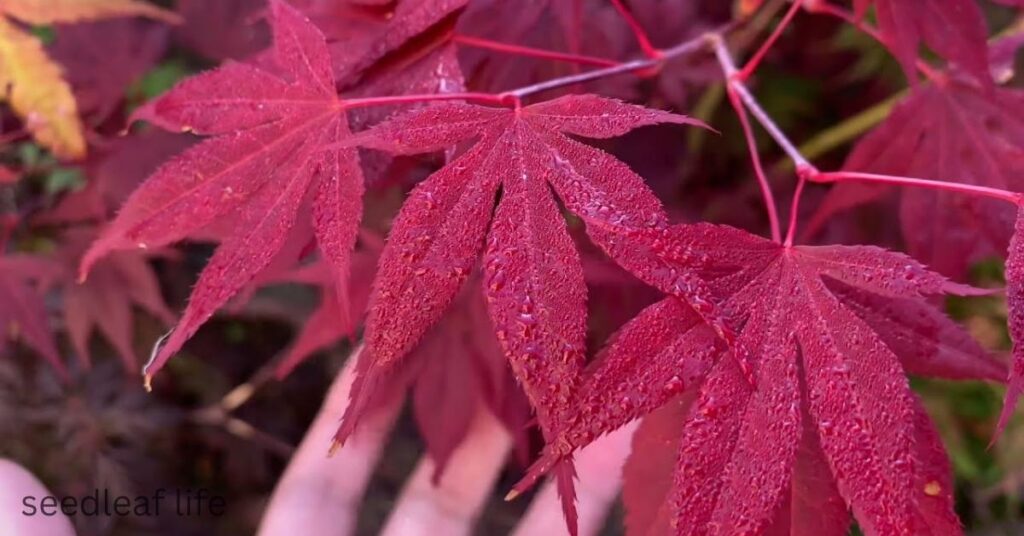
Seasonal colors, aesthetic appeal, and portability
Seasonal Beauty
- Japanese Acer in pot displays vibrant reds and oranges in autumn.
- Delicate greens in spring bring freshness and renewal.
- Seasonal transformations enhance outdoor spaces year-round.
- Creates tranquility and a natural connection.
Aesthetic Appeal
- Perfect backdrop for morning coffee or creative workspace.
- Enhances relaxation and peaceful ambiance.
- Unique foliage adds elegance to gardens and patios.
- Turns any corner into a serene focal point.
Portability & Flexibility
- Easy to rearrange across your garden or patio.
- Can be showcased outdoors in summer gatherings.
- Brings indoor charm during colder months.
- Lightweight design allows effortless movement.
Lifestyle Benefits
- Enriches daily life with beauty and calmness.
- Provides versatility in garden design.
- Matches changing seasons and personal style.
- Keeps your home warm, inviting, and inspiring all year round.
Conclusion
In conclusion, cultivating a Japanese Acer in pot is not just about adding a splash of vibrant color to your garden, it’s a journey of nurturing and appreciation for nature’s artistry. From selecting the right pot and soil to understanding their light and watering needs, each step allows you to connect more deeply with your plant.
These stunning trees, with their delicate leaves and graceful shapes, can transform any outdoor space into a peaceful paradise. They thrive beautifully in containers, making them perfect for patios, balconies, or even small gardens. Every garden lover should embrace the beauty of a Japanese Acer in pot.
Not only do they bring elegance and serenity to our surroundings, but we also invite mindfulness as we care for them. Watching the seasons change their foliage colors is a reminder of nature’s cycles, inspiring peace and reflection.
let’s go, Choose your favorite variety, find a cozy pot, and create a living masterpiece that will enhance your garden experience for years to come..

